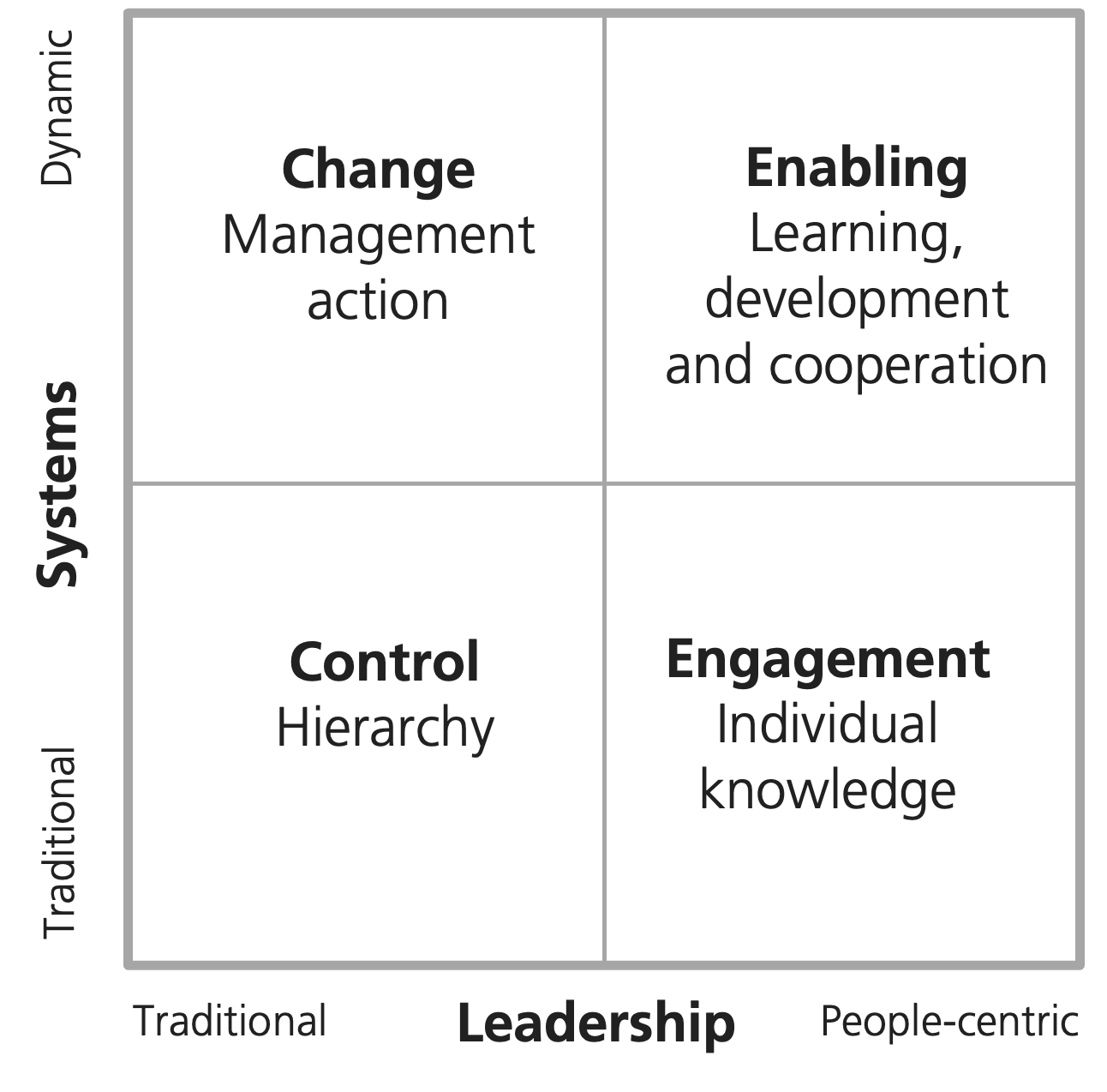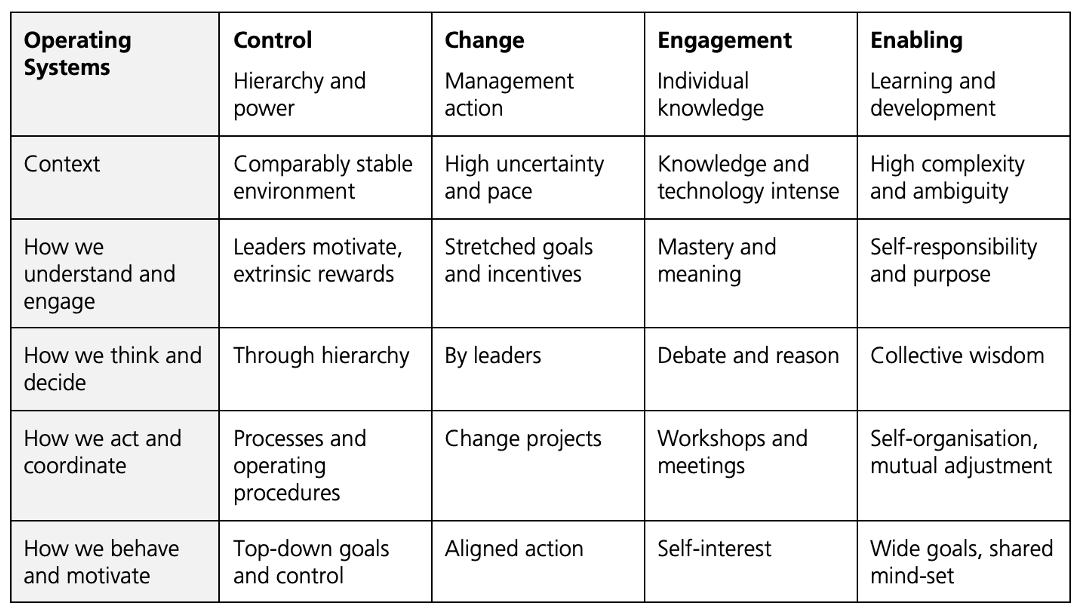Operating systems ensure the seamless functioning of management and organizations at scale. Innovations make operating systems unique. Traditional operating systems are rooted in Taylorism that was designed for companies operating in the local and predictable context of the industrial economy. But today, leaders must operate in an uncertain, complex, and global environment that characterize the digital economy. Such digital operating systems are non-standard and unique. They first require their design.
Operating systems for the digital era combine control, engagement, change, and enabling management through the principles of quantum management, ambidexterity, and complementarity. At their core remains the techniques of the inner game that enables people to learn fast and perform.

Differentiated operating systems combine purpose-driven, adaptable, self-organizing, holistic, integrative, collaborative, diverse, and evolutionary capabilities to enable creativity and innovation, and at the same time, top-down, controlling, procedural, and goal-oriented features for superior reliability, quality and efficiency. Such operating systems have a design that makes them a competitive advantage.

The organization twin toolkit helps leaders identify the unique capabilities of their organizations, their management, and the operating system to release peak performance.
We have extensively published on management innovation: In The Performance Triangle (2013), we have demonstrated agile organization. People-centric Management (2020) added the human perspective. In Management Design (2021, 3rd Ed.), we demonstrated the need for dynamic capabilities. With Better Management (2022), we have set the new standards. And in The Transition of Organizations (2024), we added the transformative perspectives.